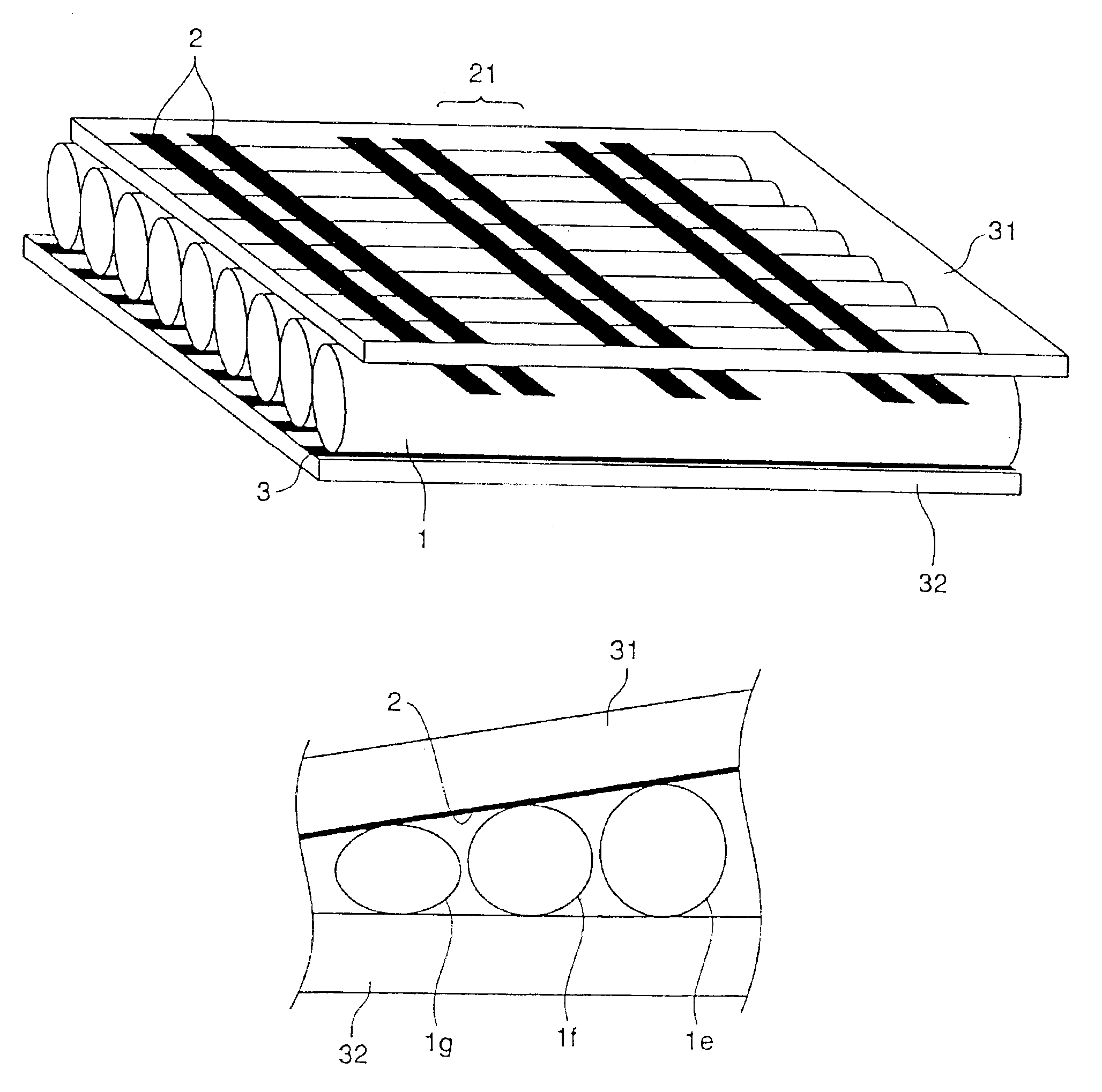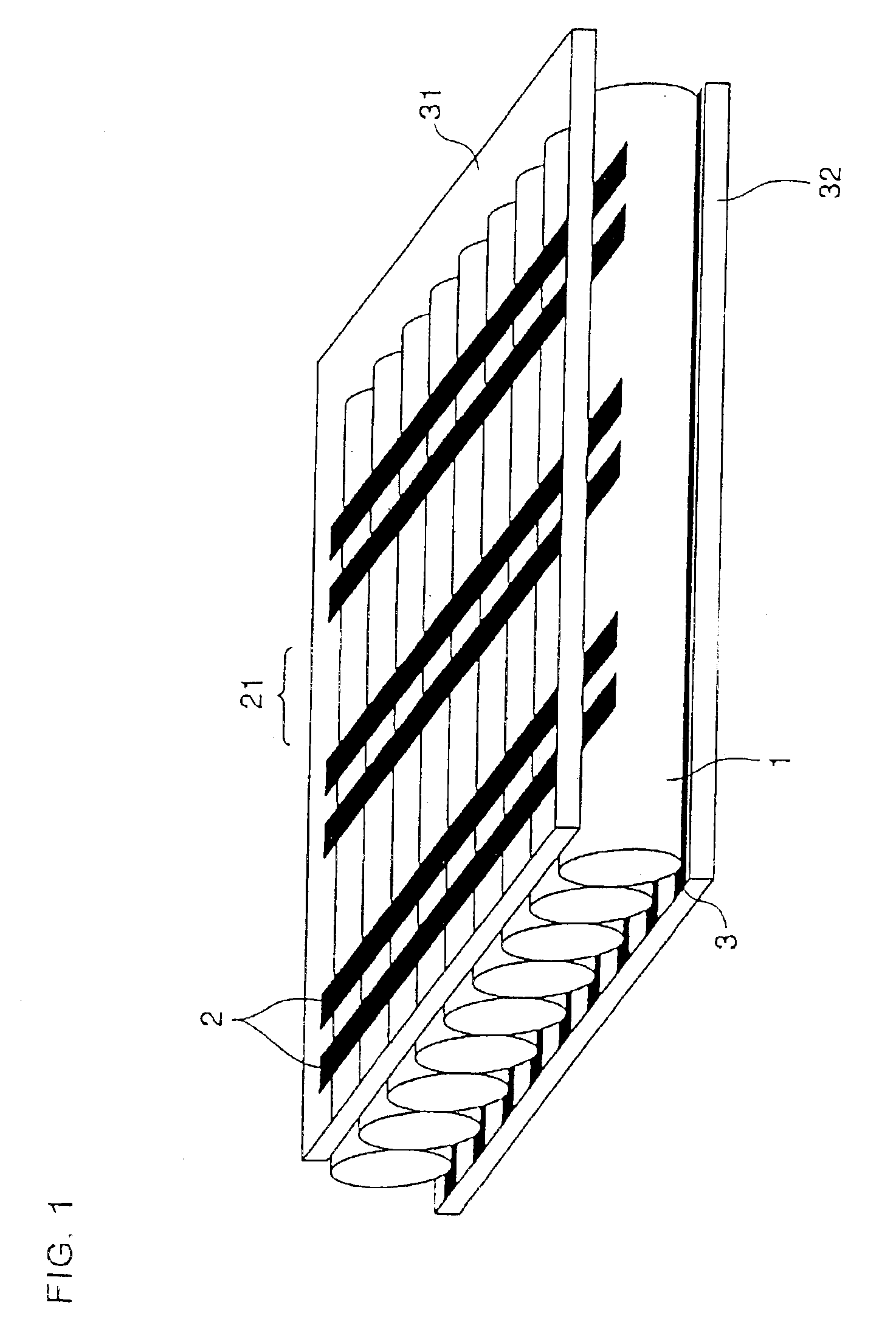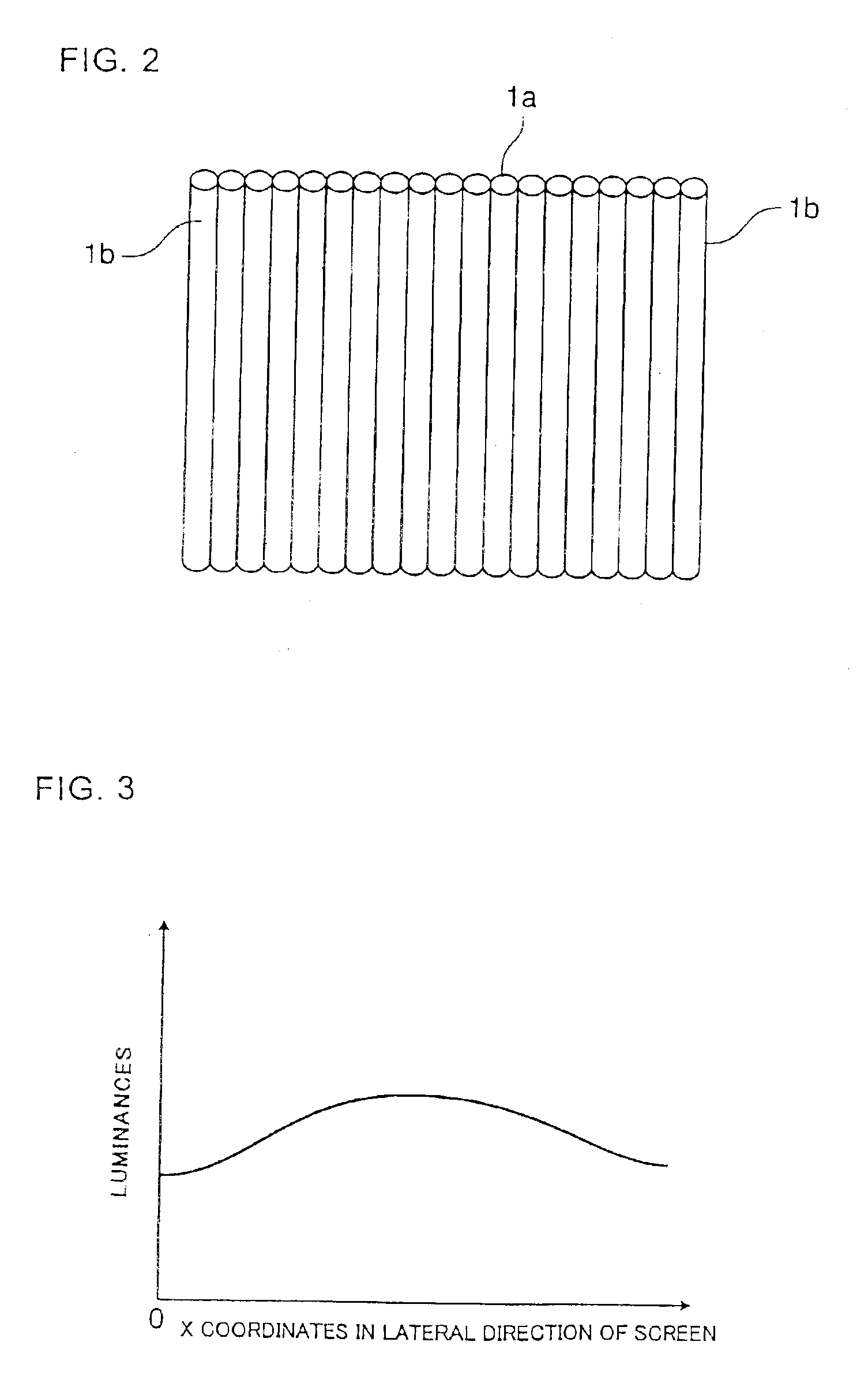Display device with a plurality of light-emitting tubes arranged in parallel
a technology of display device and light-emitting tube, which is applied in the direction of discharge tube luminescnet screen, identification means, instruments, etc., can solve the problems of difficulty in manufacturing light-emitting tube of the same shape and performance, and uneven luminance of light-emitting tube, so as to prevent irregular display of display device and variations of driving voltage
- Summary
- Abstract
- Description
- Claims
- Application Information
AI Technical Summary
Benefits of technology
Problems solved by technology
Method used
Image
Examples
embodiment 1
FIG. 2 is an exemplary view illustrating the construction of a display device of The figure shows a cross-sectional view of the display device.
In the present embodiment, a light-emitting tube, having a circular cross section, is formed of Pyrex® glass (a heat-resisting glass manufactured by Corning Inc. in U.S.A.) or the like to have an external diameter of 1 mm, a wall thickness of 100 μm and a length of 400 mm.
The tube 1 is obtained by manufacturing a base material similar to and larger than the tube 1 by Danner process and extending the base material while softening it by heating.
In the present embodiment, the plurality of light-emitting tubes are arranged in accordance with their luminance. In other words, a light-emitting tube 1a having a higher luminance is arranged at the center of the screen and tubes 1b having a lower luminance are arranged at left and right ends of the screen. The tubes have their own luminances determined in manufacture. Therefore, the luminances are pre...
embodiment 3
FIG. 9 is an exemplary view showing the construction of a display device according to This figure illustrates a section of the display device crossing at a right angle a longitudinal direction of the light-emitting tubes. In the present embodiment, the tubes are arranged in accordance with the dimension of external diameter.
In other words, a tube 1e having a large dimension of external diameter is arranged at one end (e.g., a right end) of the screen, a tube 1f having a middle dimension of external diameter is successively arranged at the center thereof and a tube 1g having a small dimension of external diameter is arranged at the other end (e.g., a left end) thereof. The tubes have their own dimensions of external diameter determined in manufacture. Therefore, the dimensions of external diameter are previously measured and then the tubes are arranged.
When the tubes are arranged in the order of dimension of external diameter as described above, contact areas between the display ele...
embodiment 4
FIG. 11 is an exemplary view illustrating the construction of a display device according to This figure shows a section of the display device crossing at a right angle a longitudinal direction of the light-emitting tubes. In the present embodiment, the tubes have an oblate spheroidal section and are arranged in accordance with the dimension of external diameter.
In the same manner as in Embodiment 3, a tube 1h having a large dimension of external diameter is arranged at one end (e.g., a right end) of the screen, a tube 1i having a middle dimension of external diameter is successively arranged at the center thereof and a tube 1j having a small dimension of external diameter is arranged at the other end (e.g., a left end) thereof. The tubes have their own dimensions of external diameter determined in manufacture. Therefore, the dimensions of external diameter are previously measured and then the tubes are arranged.
When the tubes are arranged in the order of dimension of external diame...
PUM
 Login to View More
Login to View More Abstract
Description
Claims
Application Information
 Login to View More
Login to View More - R&D
- Intellectual Property
- Life Sciences
- Materials
- Tech Scout
- Unparalleled Data Quality
- Higher Quality Content
- 60% Fewer Hallucinations
Browse by: Latest US Patents, China's latest patents, Technical Efficacy Thesaurus, Application Domain, Technology Topic, Popular Technical Reports.
© 2025 PatSnap. All rights reserved.Legal|Privacy policy|Modern Slavery Act Transparency Statement|Sitemap|About US| Contact US: help@patsnap.com



